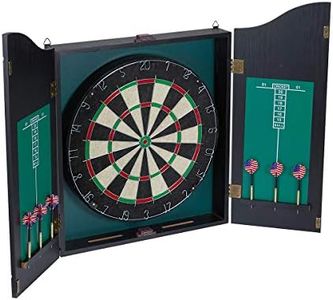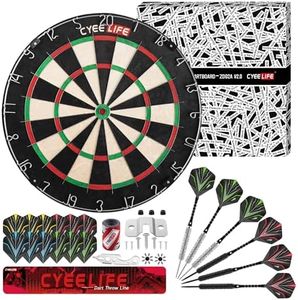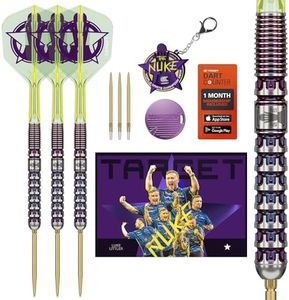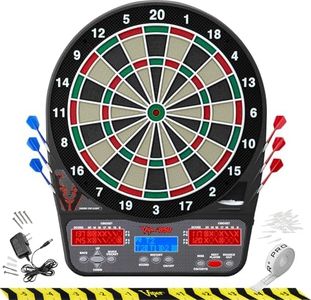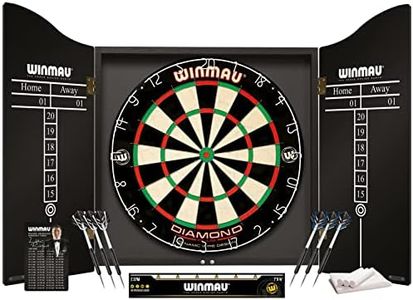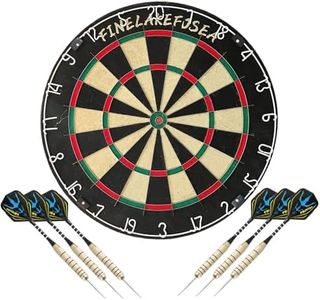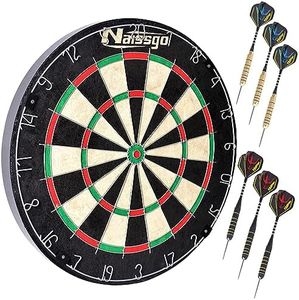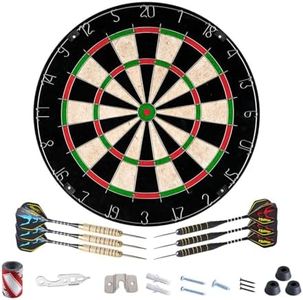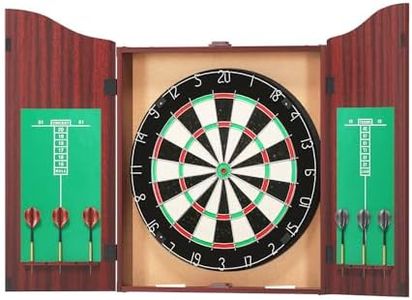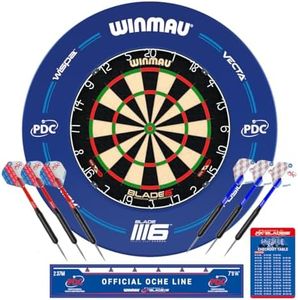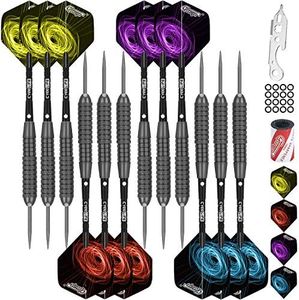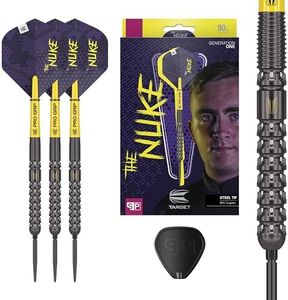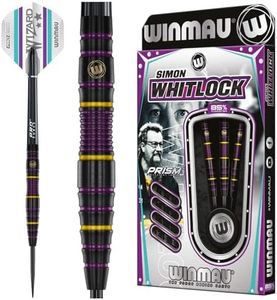We Use CookiesWe use cookies to enhance the security, performance,
functionality and for analytical and promotional activities. By continuing to browse this site you
are agreeing to our privacy policy
10 Best Dart Sets
From leading brands and best sellers available on the web.By clicking on a link to a third party's website, log data is shared with that third party.
Buying Guide for the Best Dart Sets
Buying a dart set can be an exciting experience, especially whether you’re a beginner aiming to practice at home, or a seasoned player wanting to upgrade your game. The right dart set will make your play more enjoyable and help you develop your skills. To choose your ideal set, think about where and how often you’ll play, your level of experience, and any preferences you have regarding feel and style. By understanding a few key characteristics of dart sets, you’ll be able to find one that matches your needs.Dart WeightDart weight refers to how heavy each individual dart is, and it’s typically measured in grams. This matters because the weight of a dart affects how it flies and how it feels when you throw it. Dart weights usually range from 16g to 30g, with beginners often finding 18g-22g a good starting point. Lighter darts tend to require more force to throw and can move differently in the air, while heavier ones are generally more stable but may be harder to control if you’re not used to them. If you’re unsure, try a mid-range weight first and adjust as you get a sense for what feels comfortable and gives you good control.
Barrel MaterialThe barrel is the thickest part of the dart that you grip when throwing. Common materials include brass, nickel-silver, and tungsten. Brass is lightweight and less expensive, but can wear out faster. Tungsten is denser, so it allows for thinner yet heavier darts and often lasts longer, making it a popular choice for more serious players. Nickel-silver sits between these two in terms of durability and price. If you’re just starting out, any material will work, but as you get more experienced, tungsten barrels may help your accuracy and consistency.
Dart Tip TypeDart sets come with either steel tips or soft tips. Steel tip darts are used for traditional bristle dartboards and are generally meant for more serious or classic play. Soft tip darts, on the other hand, are made for electronic dartboards and are safer for casual or family play. The right choice depends on what type of dartboard you have or plan to get, so always match your dart tip type to your board for the best experience and safety.
Flight Shape and MaterialThe flight is the fin at the back of the dart, and it stabilizes the dart in flight. Flights come in different shapes, such as standard, slim, or kite, which can affect how much the dart floats or glides. Larger flights (like standard) provide more drag and are good for slower, lofted throws, while smaller flights (like slim) are better for faster, direct throws. Materials range from basic plastic to more durable, textured options. Beginners may do best with standard flights, but experimenting with different shapes can help you fine-tune your throw as you progress.
Shaft Length and MaterialThe shaft connects the barrel to the flight and can be made from plastic, nylon, aluminum, or composite materials. The length of the shaft changes the dart's center of gravity: shorter shafts make the dart more front-heavy (for faster, direct throws) while longer shafts add more stability and can suit a more relaxed, arching throw. Materials like aluminum last longer than plastic but may bend more easily. If you’re just beginning, medium-length nylon shafts offer a balance of durability and performance.
Grip Texture and StyleThe grip on the barrel can range from smooth to highly textured, and this affects how easy it is to hold and control the dart. More texture or rings may provide better grip, which can help if your hands get sweaty, while a smoother grip feels cleaner if you prefer less resistance. Your personal comfort and throwing style determine what’s best for you, so it’s worth trying out a few grip styles if possible.
